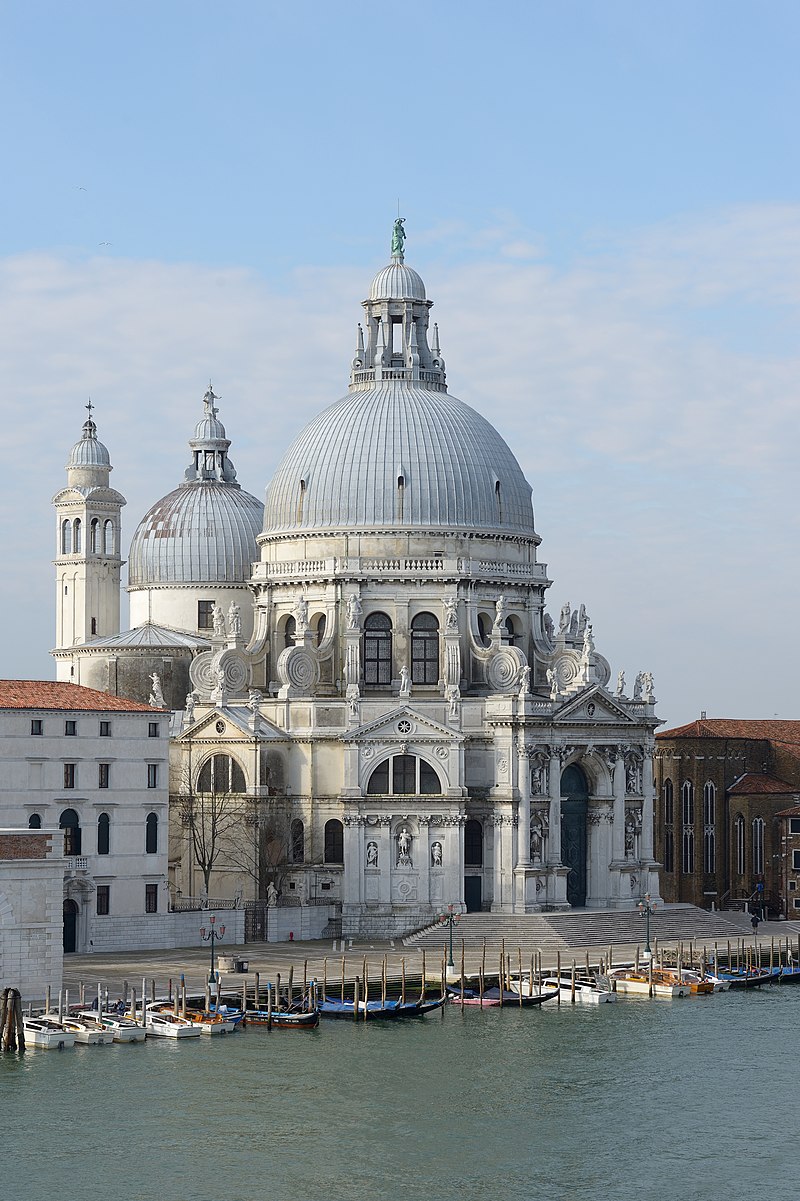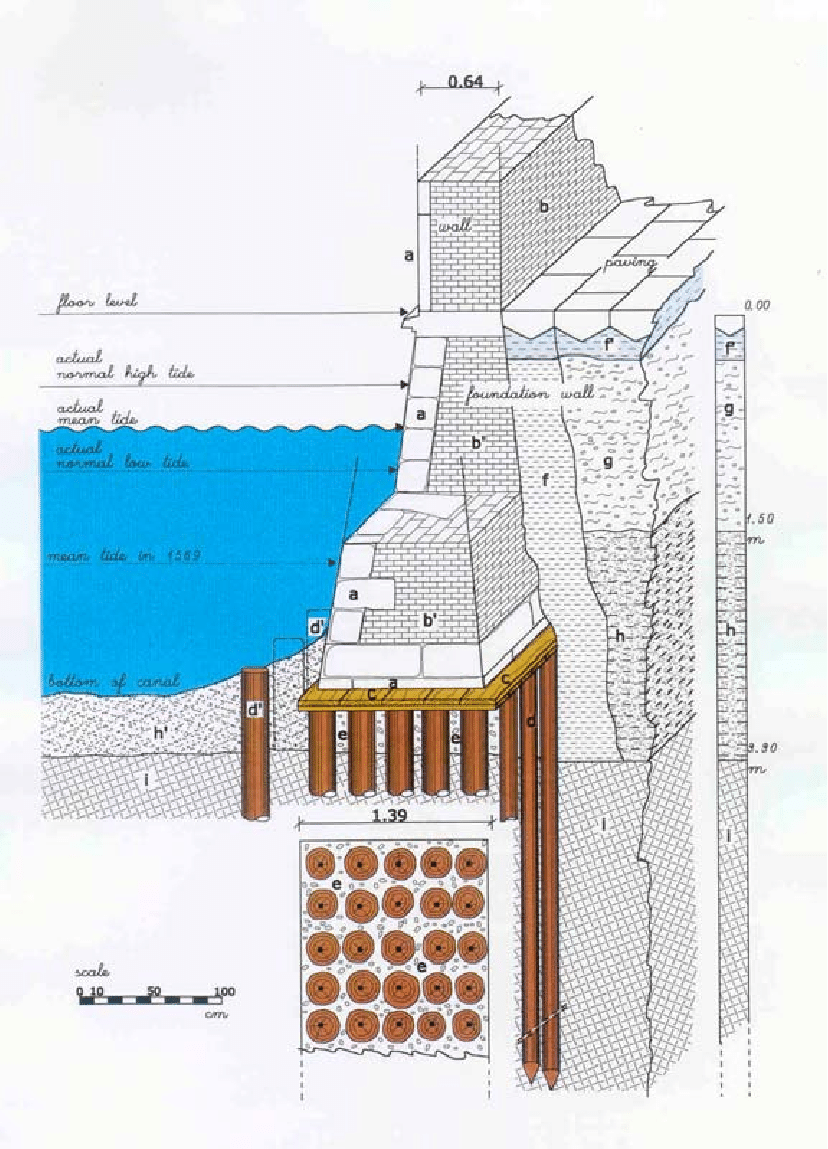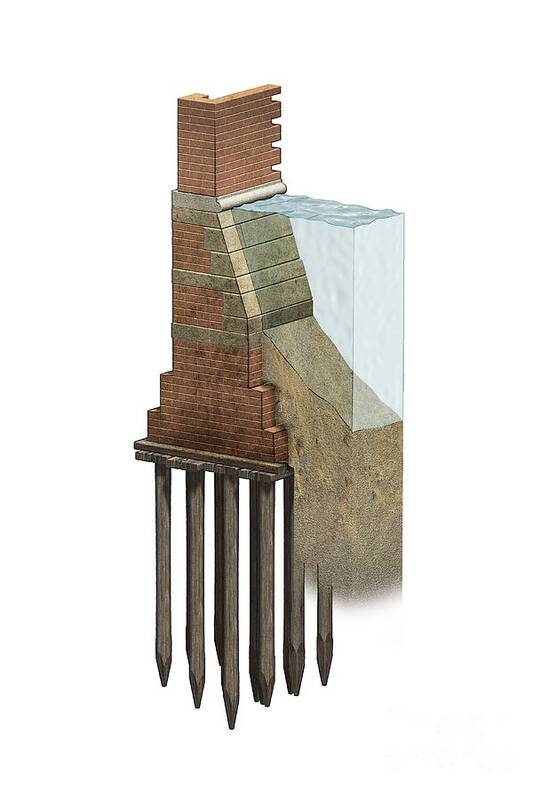
Since 421 AD, Venice has stood atop millions of wooden piles driven deep into the clay bed of the lagoon. Unlike modern cities built on steel and concrete, Venice’s foundations rely primarily on alder wood, with some oak, chosen for its durability in water. This intricate network of submerged timber supports the entire city, allowing it to rise above the water.
Over centuries, constant exposure to saltwater has petrified these wooden pillars, hardening them into a stone-like state. This natural preservation process has enabled Venice to withstand the test of time. St. Mark’s Campanile alone rests on a staggering 100,000 piles, while the grand Basilica della Salute required over a million. To create this massive foundation, ancient builders drove the tree trunks into the seabed with precise craftsmanship, forming an immense submerged forest beneath the city.
 (Basilica della Salute)
(Basilica della Salute)
This hidden structure extends up to three meters deep, with piles spaced just half a meter apart for maximum stability. Despite being submerged, these wooden pillars remain remarkably intact, continuing to support Venice’s historic buildings and canals. At 1.6 meters below the waterline, this extraordinary feat of medieval engineering has upheld one of the world’s most captivating cities for over 1,500 years, defying time and nature in a delicate yet enduring balance.
 (Schematic Representation)
(Schematic Representation)
 (Foundation artwork)
(Foundation artwork)